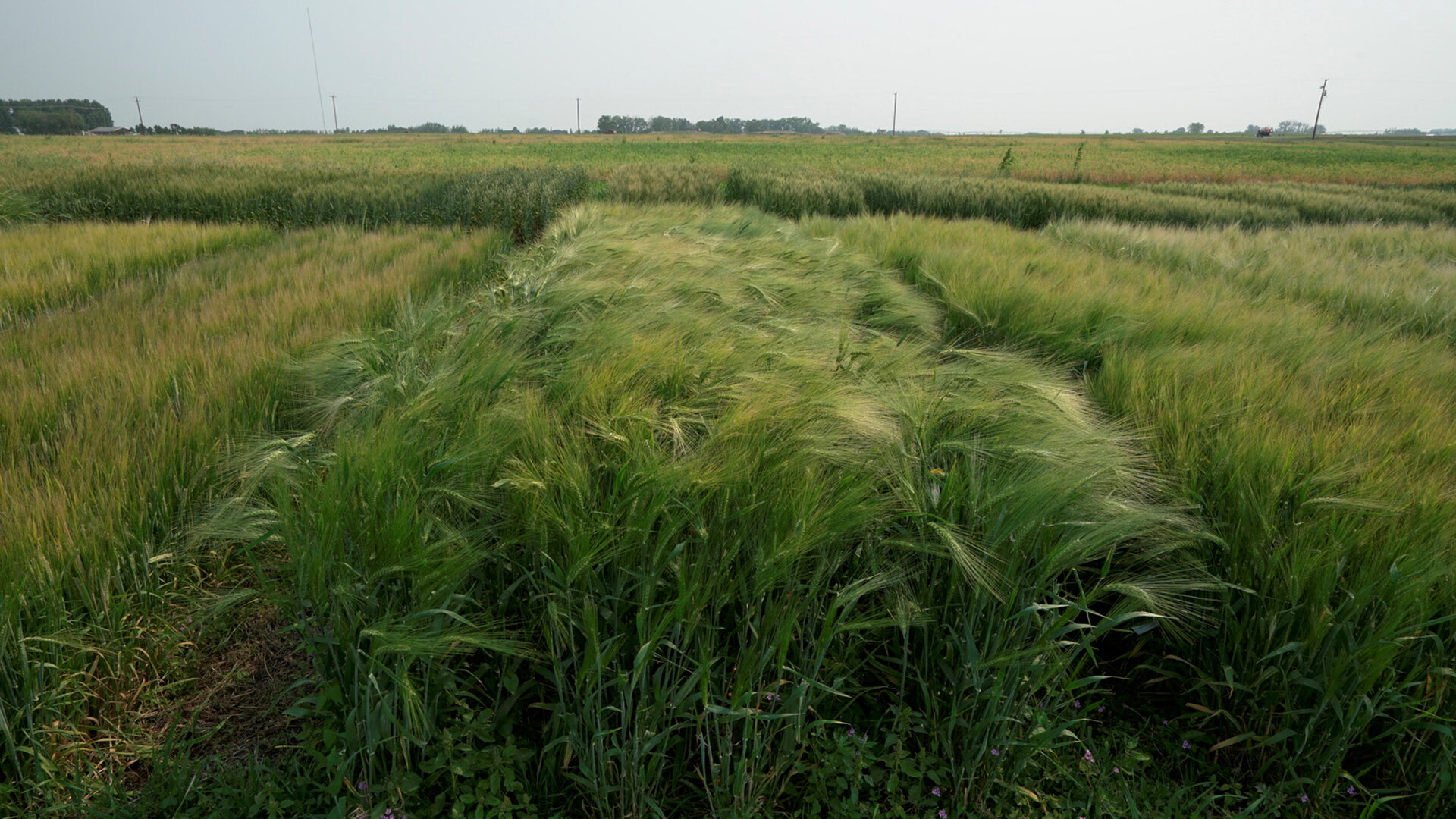Project AbstractFarmer yields are managed by balancing cultivar selection and agronomic practices. We hypothesize that feed barley yields could be improved by adopting new cultivars and improved agronomic practices. In Alberta, the most commonly grown feed barley varieties are between six to 20 years old. However, the recent registration of two new barley varieties with promising yield improvements may be opportunities for Alberta growers to significantly increase their feed barley production. Lodging is a serious production and management constraint for Alberta barley growers. With the registration of Moddus plant growth regulator (PGR) in the 2021 cropping season, barley growers can reduce barley height and lodging. However, previous AB research has not shown consistent improvements across cultivars or environments. Related research in South Africa suggests that split applications and/or different application timings will improve performance consistency. Alberta growers are also looking to improve production efficiency, so earlier or later PGR application timings may create the opportunity for tank-mixing herbicides and/or fungicide with PGRs, to reduce the number of sprayer passes. The combined use of: newly registered, higher yielding, feed barley varieties; Moddus PGR; and tank-mixes with herbicides or foliar fungicide has the potential to increase barley yields from crops that are easier to harvest (due to the more consistently reduced lodging) thereby increasing feed barley production in Alberta. |
|
||||||||||
Project Objectives
|
|||||
Methods |
|||||||||||||||
|
These treatments were selected in consultation with Syngenta. |
||||||||||||||
|
The herbicide selection for tank mixing at GS 21-24 will include a broadleaf and graminicide and will be determined in consultation with Syngenta. Miravis Neo will be the fungicide selected for tank mixing with Moddus at GS 37. Treatments that do not require Moddus at either GS 21-24 or GS 37 will receive the same herbicide and/or fungicide application as other plots on the respective application day in order to eliminate confounding effects of differential weed and disease control. Base agronomic practices: direct seed into canola stubble; treat seed with Raxil PRO SHIELD; pre-seed burnoff with glyphosate + Heat; early seeding to achieve a target rate of 300 plants/m2; balanced fertility for a yield goal of 180 bu/ac barley yield; actual N fertilizer rates must be at least 150 lbs actual N/acre (N fertilizer must be deep banded to avoid N loss); intensive weed control (wild oat and broadleaf herbicide at 2-3 leaf stage (GS 12-13)); foliar fungicide application at head timing (Prosaro). MeasurementsSoil temperature and soil moisture levels at planting and Moddus application dates; emergence counts 21 days after planting; weekly plant heights on all plots starting 14 days after Moddus application until anthesis; date when 80% of the plot has heads 50% emerged from the boot; height at physiological maturity; lodging index (area lodged x lodging intensity) rated weekly from soft dough stage to physiological maturity; days to physiological maturity (via head cutting method); yield and grain moisture at harvest; test weight; thousand kernel weight; grain quality as determined by NIR; distribution of growing season rainfall; economic analysis. ResultsSign in or subscribe to view. |

